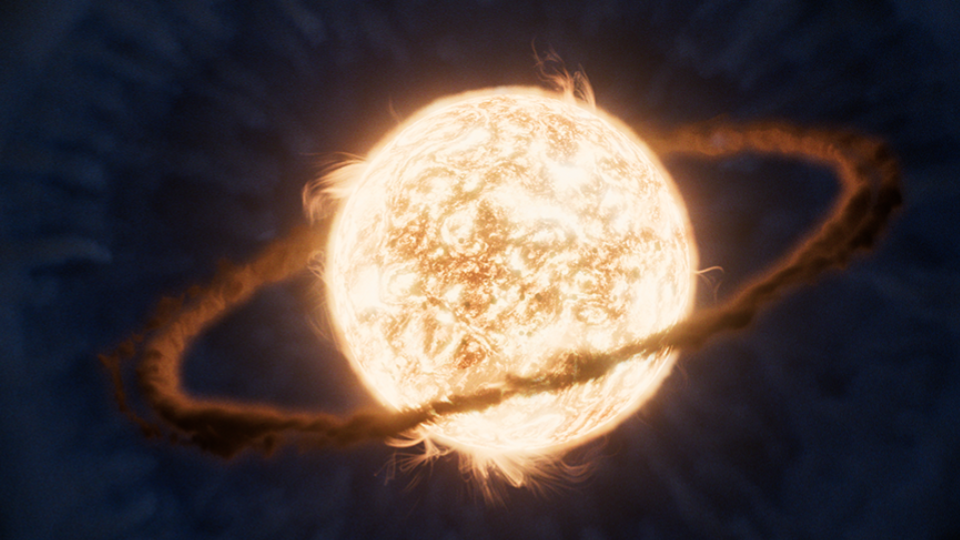
One of the most mystifying planets to many of us are the hot Jupiters. These massive worlds have orbits smaller than Mercury’s and in some cases are so close to their stars that starlight is pushing mass off the planet or the planet is raising tides on the star.
Exactly how you snuggle a planet next to a star and have it stay there is … confusing.
And now we know, not all the planets succeed in getting close without falling in.
Back in 2019, a star about 12,000 light years from Earth, in a particularly crowded part of the sky, was observed by the NEOWISE mission to start shining with a lot more infrared light. Its color literally changed. Then, a year later, in 2020, the Zwicky Transient Facility saw a flash of optical light consistent with a planet getting chomped on by its star. It was initially assumed that the reddening we saw was associated with an aging star starting to evolve into a red giant, and that the star was eating its worlds as it expanded in size.
This kind of evolution, and planet-eating behavior, is exactly what we expect of our Sun, and researchers were able to get JWST time to look at this system and see what could be learned.
With JWST’s extra detailed view, they were able to better measure the star’s light separate from all of its neighbors’ light, and it appears the star isn’t actually evolving into a red giant. Instead, it appears that a planet tried to snuggle in toward the star, but was disrupted. Its debris field would have been heated by the star and radiated in the infrared, creating the emissions seen by NEOWISE. Ultimately, whatever was left of the planet plunged in, and the energy released in the process created the flash that the Zwicky Transient Facility detected. Today, a hot disk of gas wraps around the star.
This was the first detection of this kind, but with Rubin Observatory gearing up to start monitoring the sky for things that flicker and flare in the night, we can hope that more such flashes will be caught. The JWST observations were part of a multi-telescope, multi-nation program designed to point telescopes at weirdly changing places, and see what is going on, and this target of opportunity plan will allow future sources to also be observed.
It is cool to think that we first discovered hot Jupiters in 1995, and just 30 years later, we are starting to catch hot Jupiters falling into their stars.
